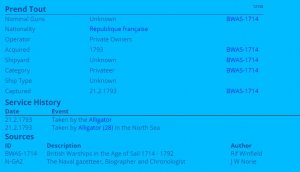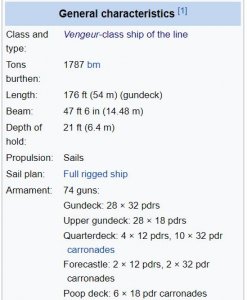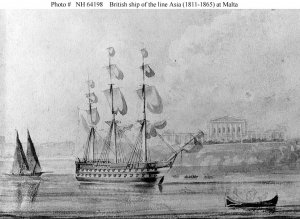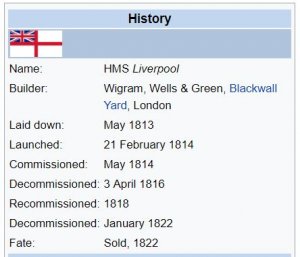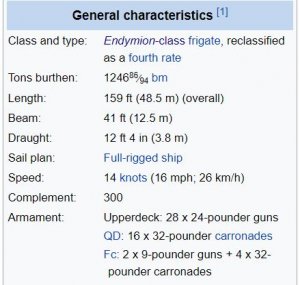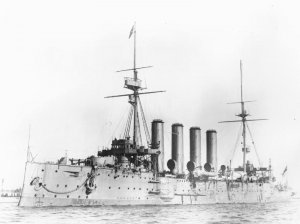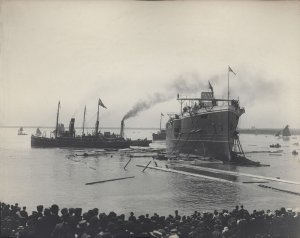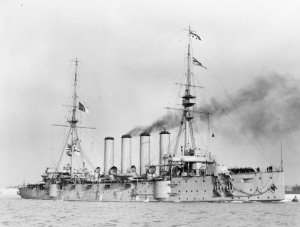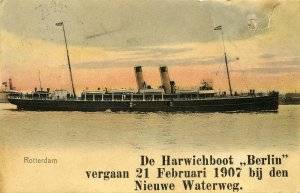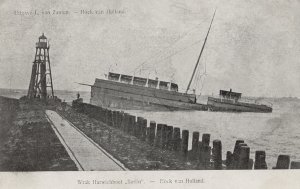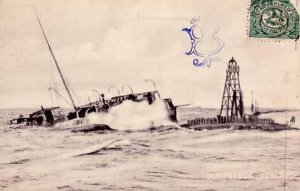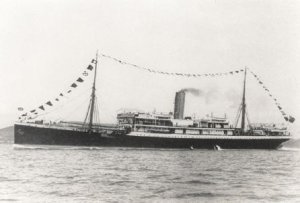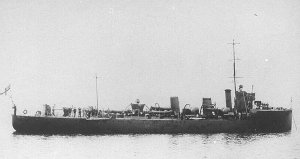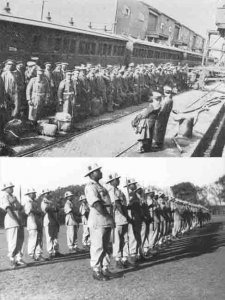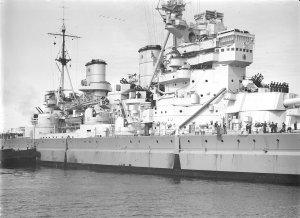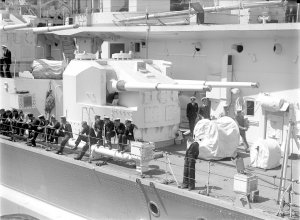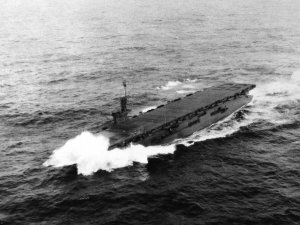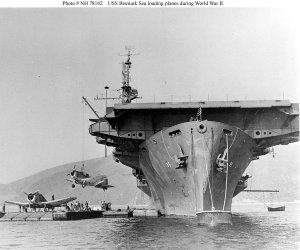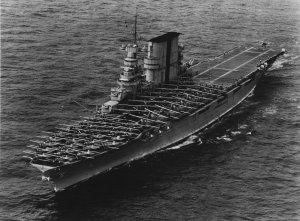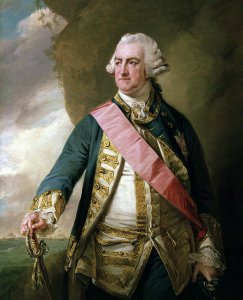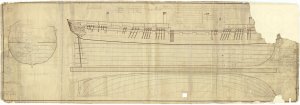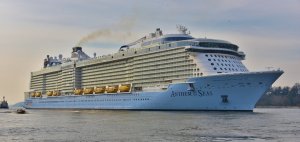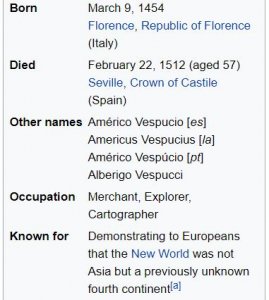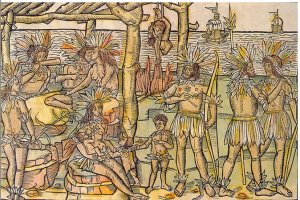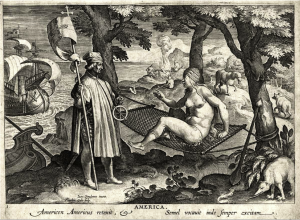Today in Naval History - Naval / Maritime Events in History
20 February 1920 – Death of Robert Peary, American admiral and explorer (b. 1856)
Rear Admiral Robert Edwin Peary Sr. (/ˈpɪəri/; May 6, 1856 – February 20, 1920) was an American explorer and United States Navy officer who made several expeditions to the Arctic in the late 19th and early 20th centuries. He is best known for claiming to have reached the geographic North Pole with his expedition on April 6, 1909.

Peary was born in Cresson, Pennsylvania, but was raised in Portland, Maine, following his father's death at a young age. He attended Bowdoin College, then joined the National Geodetic Survey as a draftsman. Peary enlisted in the navy in 1881, as a civil engineer. In 1885, he was made chief of surveying for the Nicaragua Canal (which was never built). Peary visited the Arctic for the first time in 1886, making an unsuccessful attempt to cross Greenland by dogsled. He returned in 1891 much better prepared, and by reaching Independence Fjord (in what is now known as Peary Land) conclusively proved that Greenland was an island. He was one of the first Arctic explorers to study Inuit survival techniques.

Peary (pictured in furs in 1909) was one of the first Arctic explorers to study Inuit survival techniques.
On his 1898–1902 expedition, Peary set a new "Farthest North" record by reaching Greenland's northernmost point, Cape Morris Jesup. He also reached the northernmost point of the Western Hemisphere, at the top of Canada's Ellesmere Island. Peary made two further expeditions to the Arctic, in 1905–06 and in 1908–09. During the latter, he claimed to have reached the North Pole. Peary received a number of awards from geographical societies during his lifetime, and in 1911 received the Thanks of Congress and was promoted to rear admiral. He served two terms as president of The Explorers Club, and retired to Eagle Island.
Peary's claim to have reached the North Pole was widely debated in contemporary newspapers (along with a competing claim made by Frederick Cook), but eventually won widespread acceptance. However, in a 1989 book British explorer Wally Herbert concluded that Peary did not reach the pole, although he may have been as close as 60 miles (97 km). His conclusions have been widely accepted, although disputed by some authorities.
SS Roosevelt was an American steamship of the early 20th century. She was designed and constructed specifically for Robert Peary′s polar exploration expeditions, and she supported the 1908 expedition in which he claimed to have discovered the North Pole.
After her career with Peary, Roosevelt saw commercial use as a tug. She also operated as a United States Bureau of Fisheries supply ship and served as a United States Navy patrol vessel during World War I.

Roosevelt in the Hudson-Fulton parade in 1909
Design and construction

The hull of SS Roosevelt under construction.
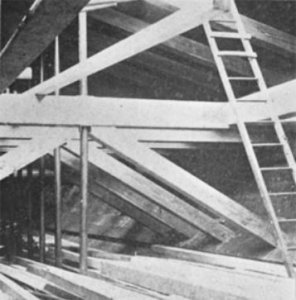
The system of trusses that braced the hull against ice pressure.
United States Navy Commander Robert Peary designed Roosevelt specifically for operations in support of his Arctic exploration expeditions. His design attempted to incorporate the best features of previous polar exploration ships with innovations that would give her first-of-their-kind capabilities.
Peary designed the ship along the same lines as the Norwegian explorer Fridtjof Nansen's schooner Fram, with the capability both to push through large floating ice packs and squeeze through and between ice fields. Roosevelt was a schooner with an ice-strengthened flexible wooden hull sheathed in steel and braced by a unique system of trusses. The wooden construction of her hull gave it both strength and the flexibility to bend rather than break when ice struck it or pressed against it, and her hull planking was assembled through a lamination process that gave her hull greater strength than a single piece of wood could provide. Her hull was 30 inches (76 cm) thick in places and was egg-shaped, a design that would allow her to rise and ride above sea ice that pushed against her below the waterline – almost popping up out of the ice – rather than be crushed by it. Her bow and stern both had 1-inch (2.5 cm) steel plating; the bow plating extended from her keel to 3 feet (0.91 m) above the waterline and 10 feet (3.0 m) aft, while the stern plating also extended from the keel to above the waterline and extended 14 feet (4.3 m) forward. Between the bow and stern plating, a layer of steel 3⁄8 of an inch (0.95 cm) thick and 6 feet (1.8 m) tall extended along the waterline.
Previous Arctic exploration ships had relied on sails for their primary propulsion, with engine power secondary, but Roosevelt became the first such ship to reverse that principle; she had three masts, all of which could carry sails for auxiliary propulsion, but relied for propulsion primarily on a powerful 1,000-horsepower (750 kW) compound steam engine – equipped with a special system that allowed it to generate 1,500 horsepower (1,100 kW) for brief periods if she encountered particularly massive ice concentrations – that drove a single, large propeller 11 feet (3.4 m) in diameter on a 1-foot (0.30 m)-diameter shaft designed to generate powerful thrust that could push her through drift ice. She had a sharply raked stemintended to increase her ramming and cutting power against sea ice, and a short length at the waterline and narrow beam to give her increased maneuverability when steering between ice packs. Her rudder was of a special design that gave her the maximum possible steering capacity while exposing the rudder as little as possible to ice damage. Her design minimized auxiliary structures, both to allow the stowage of sufficient fuel, supplies, and provisions for lengthy stays in the Arctic and to give her a relatively shallow draft so that she could operate in shallow waters and close to shore.
Roosevelt was the first ship ever built in the Western Hemisphere for Arctic exploration. Her construction cost US$150,000 and was funded in part by a US$50,000 gift by George Crocker, the youngest son of banker Charles Crocker. The McKay and Dix Shipyard laid her keel at Bucksport, Maine, on 19 October 1904. Sponsored by Peary's wife, Josephine Peary, who broke a bottle of champagne encased in ice across Roosevelt's bow, the ship was launched on 23 March 1905 and christened SS Roosevelt in honor of PresidentTheodore Roosevelt, who had openly supported Peary and played an instrumental role in arranging for the U.S. Navy to grant Peary a leave of absence so that he could continue his Arctic explorations. After fitting out, she was delivered to her owner, the Peary Arctic Club, in July 1905. She drew considerable attention because of her innovative design and at the time of her construction she was considered the strongest wooden vessel ever built.
Peary expeditions

First Mate Thomas Gushue, Chief Engineer George Wardwill, and the crew of Roosevelt during the 1905–1906 expedition
On 16 July 1905, Roosevelt, captained by Robert Bartlett, set out from New York City on what was called the Roosevelt Expedition, sponsored by the Peary Arctic Club, with Peary and his party aboard. Roosevelt withstood a fire, rudder damage, and encounters with fog and icebergs and proceeded northward to Cape Sheridan in the north of Ellesmere Island. Made fast to the ice on 5 September 1905, she remained there through the winter of 1905–1906, becoming the second-largest ship ever to spend a winter in the Arctic. Peary and his party disembarked in January 1906 to head northward across the ice, and set a record for Farthest North, reaching a latitude of 87 degrees 6 minutes North before turning back. Roosevelt broke out of the ice on 4 July 1906, prior to the return of the expedition. Carried 20 nautical miles (37 km) south, she crashed against an ice foot a few days later, losing propeller blades, her rudder, and her sternpost. On 30 July 1906, Peary and his party returned to her after a six-month absence, and on 24 August 1906 Roosevelt broke free and turned southward. By mid-September 1906 she was far enough south to assure her escape from the ice before the winter freeze and in December 1906 she arrived at New York City.
On 8 July 1908, Roosevelt, again captained by Robert Bartlett, cleared New York Harbor and began a voyage north via Baffin Bay, Smith Sound, Kane Basin, Kennedy Channel, Hall Basin, and Robeson Channel into the Arctic Ocean. In early September 1908 she again made fast to the ice at Cape Sheridan to wait out the winter of 1908–1909 as Peary and his party tried for the North Pole. Departing Cape Sheridan in February 1909, Peary determined that he had reached the North Pole on 6 April 1909, and he and his party returned to Roosevelt. In July 1909, Roosevelt began the return voyage. In mid-August 1909 she left Smith Sound, and in September 1909 she rounded Cape Breton on Newfoundland Island and steamed to New York City. She arrived in New York flying the North Pole flag, the first ship ever to enter a harbor flying the flag. Not long afterward, she participated in a naval parade on the Hudson River as part of the 1909 Hudson-Fulton Anniversary Celebration.
After his return to New York, Peary proposed that the Peary Arctic Club and the National Geographic Society jointly undertake an expedition to the Antarctic, with the Peary Arctic Club contributing Roosevelt to the expedition. However, Roosevelt required expensive repairs because of ice damage she had suffered, and the Antarctic expedition never took place.
https://en.wikipedia.org/wiki/Robert_Peary
https://en.wikipedia.org/wiki/SS_Roosevelt_(1905)
http://ufdc.ufl.edu/UF00097366/00029/18
20 February 1920 – Death of Robert Peary, American admiral and explorer (b. 1856)
Rear Admiral Robert Edwin Peary Sr. (/ˈpɪəri/; May 6, 1856 – February 20, 1920) was an American explorer and United States Navy officer who made several expeditions to the Arctic in the late 19th and early 20th centuries. He is best known for claiming to have reached the geographic North Pole with his expedition on April 6, 1909.

Peary was born in Cresson, Pennsylvania, but was raised in Portland, Maine, following his father's death at a young age. He attended Bowdoin College, then joined the National Geodetic Survey as a draftsman. Peary enlisted in the navy in 1881, as a civil engineer. In 1885, he was made chief of surveying for the Nicaragua Canal (which was never built). Peary visited the Arctic for the first time in 1886, making an unsuccessful attempt to cross Greenland by dogsled. He returned in 1891 much better prepared, and by reaching Independence Fjord (in what is now known as Peary Land) conclusively proved that Greenland was an island. He was one of the first Arctic explorers to study Inuit survival techniques.

Peary (pictured in furs in 1909) was one of the first Arctic explorers to study Inuit survival techniques.
On his 1898–1902 expedition, Peary set a new "Farthest North" record by reaching Greenland's northernmost point, Cape Morris Jesup. He also reached the northernmost point of the Western Hemisphere, at the top of Canada's Ellesmere Island. Peary made two further expeditions to the Arctic, in 1905–06 and in 1908–09. During the latter, he claimed to have reached the North Pole. Peary received a number of awards from geographical societies during his lifetime, and in 1911 received the Thanks of Congress and was promoted to rear admiral. He served two terms as president of The Explorers Club, and retired to Eagle Island.
Peary's claim to have reached the North Pole was widely debated in contemporary newspapers (along with a competing claim made by Frederick Cook), but eventually won widespread acceptance. However, in a 1989 book British explorer Wally Herbert concluded that Peary did not reach the pole, although he may have been as close as 60 miles (97 km). His conclusions have been widely accepted, although disputed by some authorities.
SS Roosevelt was an American steamship of the early 20th century. She was designed and constructed specifically for Robert Peary′s polar exploration expeditions, and she supported the 1908 expedition in which he claimed to have discovered the North Pole.
After her career with Peary, Roosevelt saw commercial use as a tug. She also operated as a United States Bureau of Fisheries supply ship and served as a United States Navy patrol vessel during World War I.

Roosevelt in the Hudson-Fulton parade in 1909
Design and construction

The hull of SS Roosevelt under construction.

The system of trusses that braced the hull against ice pressure.
United States Navy Commander Robert Peary designed Roosevelt specifically for operations in support of his Arctic exploration expeditions. His design attempted to incorporate the best features of previous polar exploration ships with innovations that would give her first-of-their-kind capabilities.
Peary designed the ship along the same lines as the Norwegian explorer Fridtjof Nansen's schooner Fram, with the capability both to push through large floating ice packs and squeeze through and between ice fields. Roosevelt was a schooner with an ice-strengthened flexible wooden hull sheathed in steel and braced by a unique system of trusses. The wooden construction of her hull gave it both strength and the flexibility to bend rather than break when ice struck it or pressed against it, and her hull planking was assembled through a lamination process that gave her hull greater strength than a single piece of wood could provide. Her hull was 30 inches (76 cm) thick in places and was egg-shaped, a design that would allow her to rise and ride above sea ice that pushed against her below the waterline – almost popping up out of the ice – rather than be crushed by it. Her bow and stern both had 1-inch (2.5 cm) steel plating; the bow plating extended from her keel to 3 feet (0.91 m) above the waterline and 10 feet (3.0 m) aft, while the stern plating also extended from the keel to above the waterline and extended 14 feet (4.3 m) forward. Between the bow and stern plating, a layer of steel 3⁄8 of an inch (0.95 cm) thick and 6 feet (1.8 m) tall extended along the waterline.
Previous Arctic exploration ships had relied on sails for their primary propulsion, with engine power secondary, but Roosevelt became the first such ship to reverse that principle; she had three masts, all of which could carry sails for auxiliary propulsion, but relied for propulsion primarily on a powerful 1,000-horsepower (750 kW) compound steam engine – equipped with a special system that allowed it to generate 1,500 horsepower (1,100 kW) for brief periods if she encountered particularly massive ice concentrations – that drove a single, large propeller 11 feet (3.4 m) in diameter on a 1-foot (0.30 m)-diameter shaft designed to generate powerful thrust that could push her through drift ice. She had a sharply raked stemintended to increase her ramming and cutting power against sea ice, and a short length at the waterline and narrow beam to give her increased maneuverability when steering between ice packs. Her rudder was of a special design that gave her the maximum possible steering capacity while exposing the rudder as little as possible to ice damage. Her design minimized auxiliary structures, both to allow the stowage of sufficient fuel, supplies, and provisions for lengthy stays in the Arctic and to give her a relatively shallow draft so that she could operate in shallow waters and close to shore.
Roosevelt was the first ship ever built in the Western Hemisphere for Arctic exploration. Her construction cost US$150,000 and was funded in part by a US$50,000 gift by George Crocker, the youngest son of banker Charles Crocker. The McKay and Dix Shipyard laid her keel at Bucksport, Maine, on 19 October 1904. Sponsored by Peary's wife, Josephine Peary, who broke a bottle of champagne encased in ice across Roosevelt's bow, the ship was launched on 23 March 1905 and christened SS Roosevelt in honor of PresidentTheodore Roosevelt, who had openly supported Peary and played an instrumental role in arranging for the U.S. Navy to grant Peary a leave of absence so that he could continue his Arctic explorations. After fitting out, she was delivered to her owner, the Peary Arctic Club, in July 1905. She drew considerable attention because of her innovative design and at the time of her construction she was considered the strongest wooden vessel ever built.
Peary expeditions

First Mate Thomas Gushue, Chief Engineer George Wardwill, and the crew of Roosevelt during the 1905–1906 expedition
On 16 July 1905, Roosevelt, captained by Robert Bartlett, set out from New York City on what was called the Roosevelt Expedition, sponsored by the Peary Arctic Club, with Peary and his party aboard. Roosevelt withstood a fire, rudder damage, and encounters with fog and icebergs and proceeded northward to Cape Sheridan in the north of Ellesmere Island. Made fast to the ice on 5 September 1905, she remained there through the winter of 1905–1906, becoming the second-largest ship ever to spend a winter in the Arctic. Peary and his party disembarked in January 1906 to head northward across the ice, and set a record for Farthest North, reaching a latitude of 87 degrees 6 minutes North before turning back. Roosevelt broke out of the ice on 4 July 1906, prior to the return of the expedition. Carried 20 nautical miles (37 km) south, she crashed against an ice foot a few days later, losing propeller blades, her rudder, and her sternpost. On 30 July 1906, Peary and his party returned to her after a six-month absence, and on 24 August 1906 Roosevelt broke free and turned southward. By mid-September 1906 she was far enough south to assure her escape from the ice before the winter freeze and in December 1906 she arrived at New York City.
On 8 July 1908, Roosevelt, again captained by Robert Bartlett, cleared New York Harbor and began a voyage north via Baffin Bay, Smith Sound, Kane Basin, Kennedy Channel, Hall Basin, and Robeson Channel into the Arctic Ocean. In early September 1908 she again made fast to the ice at Cape Sheridan to wait out the winter of 1908–1909 as Peary and his party tried for the North Pole. Departing Cape Sheridan in February 1909, Peary determined that he had reached the North Pole on 6 April 1909, and he and his party returned to Roosevelt. In July 1909, Roosevelt began the return voyage. In mid-August 1909 she left Smith Sound, and in September 1909 she rounded Cape Breton on Newfoundland Island and steamed to New York City. She arrived in New York flying the North Pole flag, the first ship ever to enter a harbor flying the flag. Not long afterward, she participated in a naval parade on the Hudson River as part of the 1909 Hudson-Fulton Anniversary Celebration.
After his return to New York, Peary proposed that the Peary Arctic Club and the National Geographic Society jointly undertake an expedition to the Antarctic, with the Peary Arctic Club contributing Roosevelt to the expedition. However, Roosevelt required expensive repairs because of ice damage she had suffered, and the Antarctic expedition never took place.
https://en.wikipedia.org/wiki/Robert_Peary
https://en.wikipedia.org/wiki/SS_Roosevelt_(1905)
http://ufdc.ufl.edu/UF00097366/00029/18







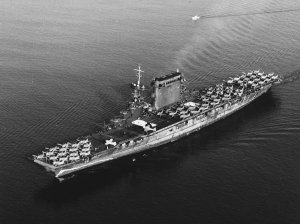
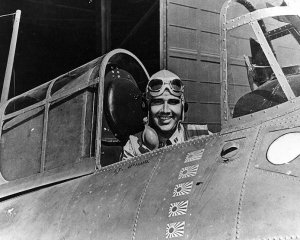


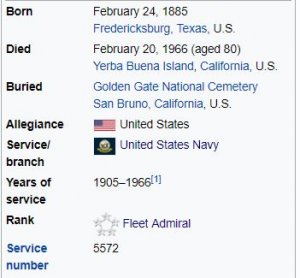















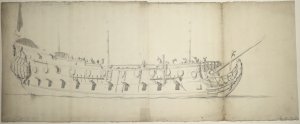





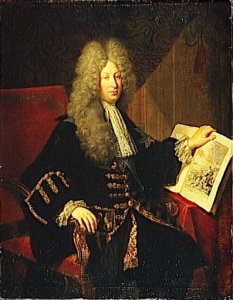
 came that the English were organizing a major expedition under Sir
came that the English were organizing a major expedition under Sir 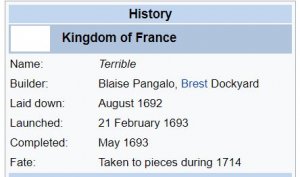


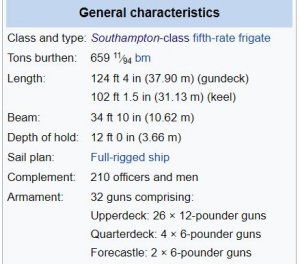

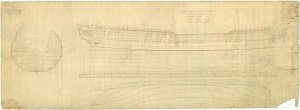

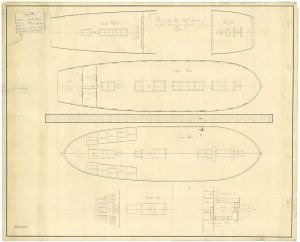


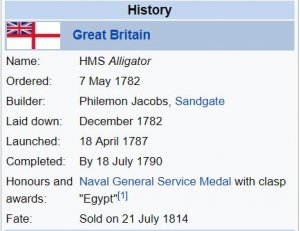
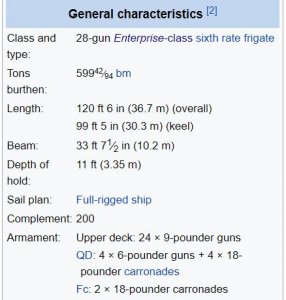
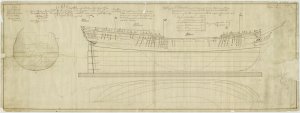
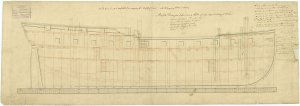
 . Because Alligator served in the navy's Egyptian campaign between 8 March 1801 and 2 September, her officers and crew qualified for the clasp "Egypt" to the Naval General Service Medal that the
. Because Alligator served in the navy's Egyptian campaign between 8 March 1801 and 2 September, her officers and crew qualified for the clasp "Egypt" to the Naval General Service Medal that the 